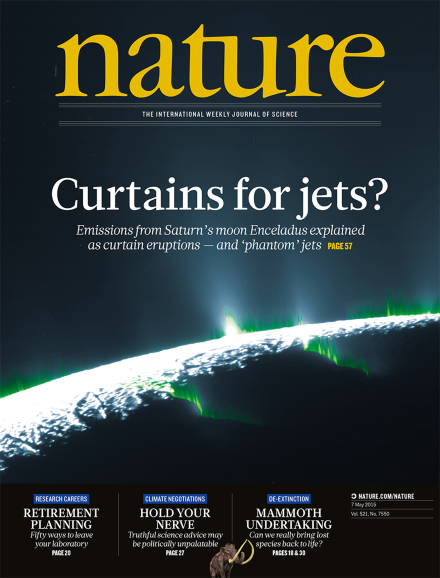Volume 521 Issue 7550, 7 May 2015
Editorial
World View
Research Highlights
Social Selection
Seven Days
News
News Feature
Comment
Correction
Books & Arts
Correspondence
News & Views
Article
Letter
Retraction
Toolbox
-
The trouble with reference rot
Collection:
-
'Living figures' make their debut
Collection:

